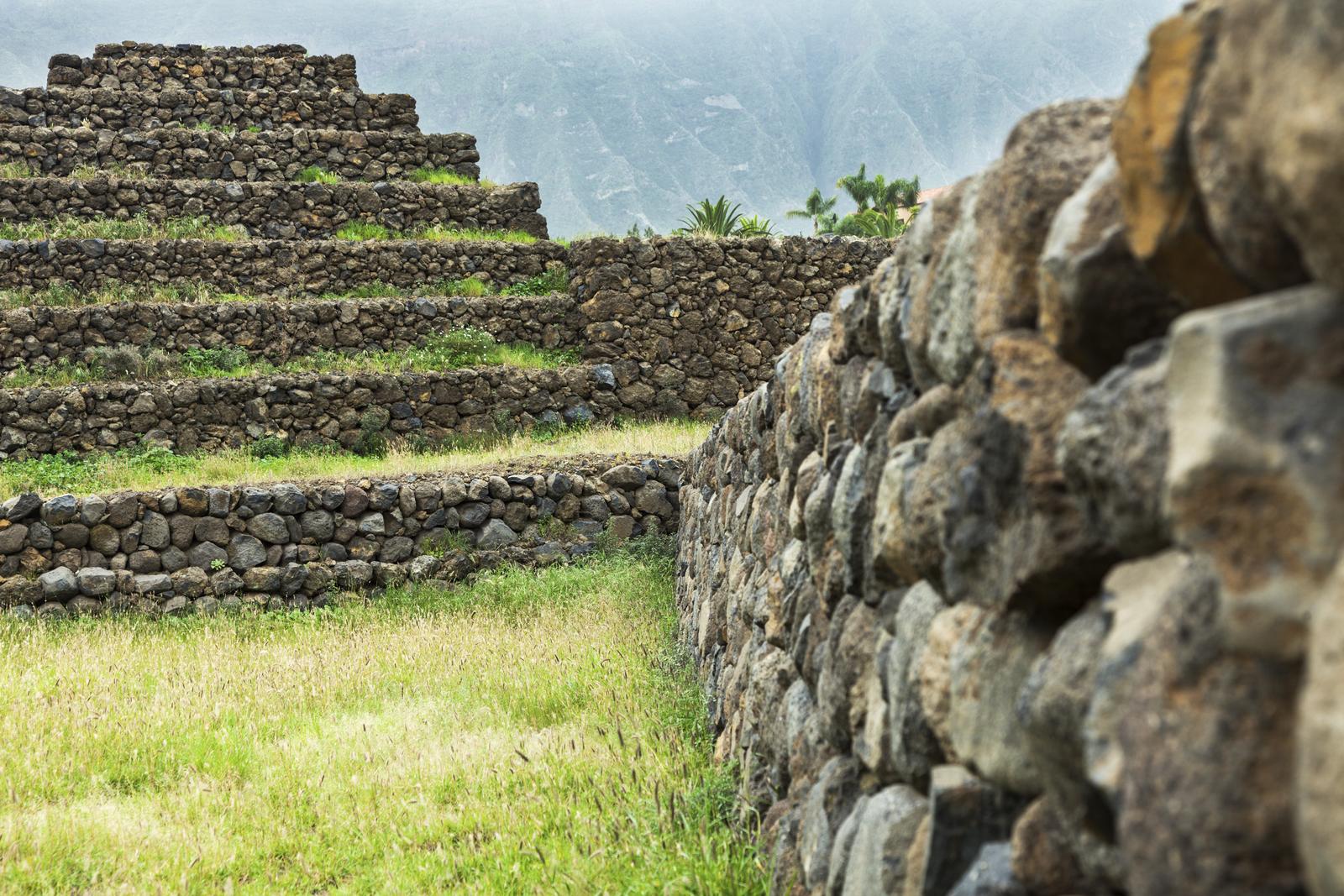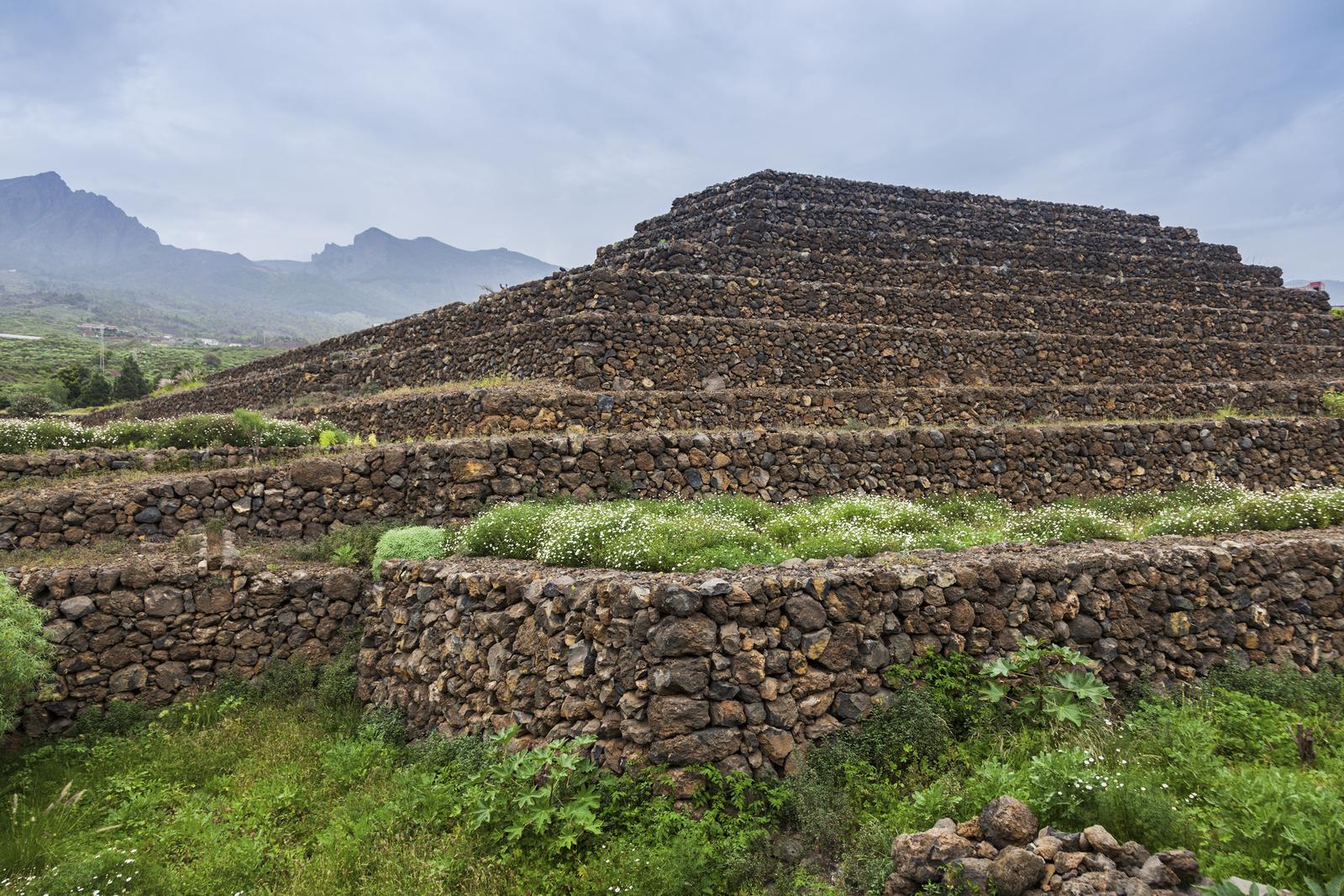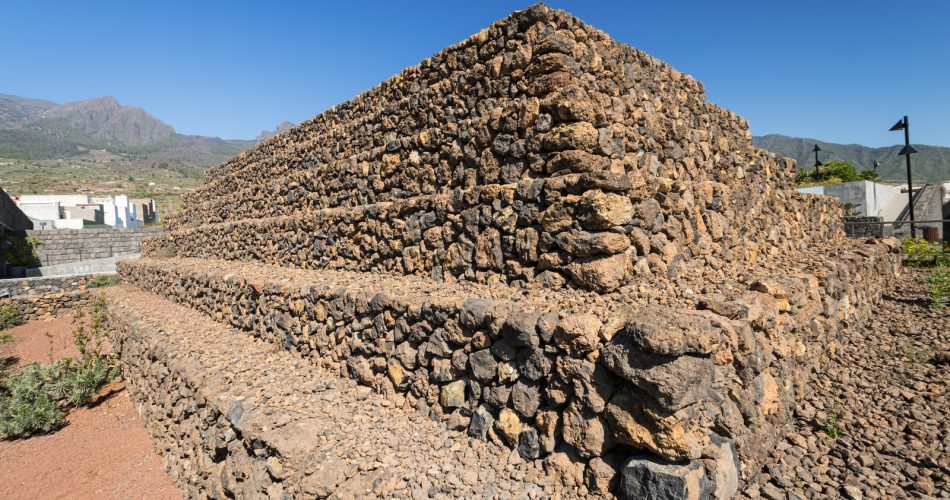There are pyramids all over the world. Some are ancient and massive, standing tall as monuments to lost civilizations, while others are smaller yet still mysterious. Our modern society, for the most part, has moved on from building pyramids, though a few modern exceptions do exist. But this article isn’t about modern pyramids, nor is it about the largest or the oldest ones. It’s about what I believe to be some of the strangest pyramids out there—the Pyramids of Güímar, located on the Canary Island of Tenerife.
Unlike the well-known pyramids of Egypt or Mesoamerica, the Pyramids of Güímar come with a cloud of mystery. Their origins and purpose remain unclear, raising more questions than answers. These stepped, rectangular structures made from volcanic stone have sparked debate among researchers, historians, and locals alike. Are they ancient ceremonial sites, or simply the byproduct of agricultural practices from a more recent era? The story behind the Pyramids of Güímar is intriguing, layered, and definitely worth exploring.
What We Know – and What We Don’t
The Pyramids of Güímar are constructed from volcanic rocks, native to the Canary Islands, and are arranged in a step-pyramid design. There are six pyramids in total, and they sit on a relatively flat plateau. They’re not enormous like the Great Pyramid of Giza or as steeped in ritual history as the pyramids of Teotihuacan, but they still capture the imagination. Standing in their shadow, you can’t help but wonder who built them and why.
Thor Heyerdahl’s Involvement
These pyramids might have remained relatively unknown if it weren’t for one man: Thor Heyerdahl. In the 1990s, the Norwegian explorer—known for his Kon-Tiki expedition, where he sailed across the Pacific to prove ancient cultures could have had contact—became fascinated with the Pyramids of Güímar. He didn’t buy the local explanation that the pyramids were just piles of rocks from farmers clearing their fields. Instead, he believed that these pyramids could have been linked to ancient civilizations, potentially serving as proof of pre-Columbian transatlantic contact.
Heyerdahl’s theory was bold, suggesting that the design of the pyramids could be connected to those found in Egypt and Mesoamerica. However, it’s important to note that this theory has been met with skepticism by many archaeologists, who argue that the pyramids are more likely the result of agricultural practices in the 19th century.
The Summer Solstice Connection
One of the most intriguing aspects of the Pyramids of Güímar is their precise alignment with the summer solstice. On June 21st, an observer standing on the largest pyramid can witness a rare double sunset—the sun sets behind a mountain, briefly disappears, then re-emerges before finally setting again. This specific alignment suggests that the pyramids may have had some form of astronomical or ceremonial significance, although there’s no definitive evidence to prove this theory.
It’s not uncommon for ancient structures to be aligned with celestial events, and this adds another layer to the debate about the purpose of the pyramids. Whether they were truly built with this alignment in mind or if it’s simply a coincidence is still unclear.

Pyramids of Guimar. Tenerife, Canary Islands, Spain.
Agricultural Terraces, or Something More?
The common explanation from locals has been that the pyramids were simply the result of farmers clearing their fields of volcanic stones and piling them up in terraces—a practice known as “majanos.” This explanation makes sense when you consider the agricultural history of Tenerife, but it doesn’t quite fit the level of precision found in the construction of these pyramids. For instance, the pyramids have well-formed steps and are built with an intentional design, which seems unlikely to be the result of random stone piling.
On the other hand, if these pyramids were built for ceremonial or astronomical purposes, why hasn’t more evidence of this been found? There are no inscriptions, no artifacts, and no clear historical records linking them to any specific civilization or ritual. This lack of concrete evidence leaves the door wide open for speculation.
Five Things You Probably Didn’t Know About the Pyramids of Güímar
- They’re Younger Than You Might Think: Although they look ancient, some researchers believe the pyramids were built as recently as the 19th century, possibly as a part of agricultural efforts. This would make them much younger than other famous pyramids around the world.
- They Were Almost Lost to Development: Before Thor Heyerdahl’s intervention, the pyramids were nearly destroyed to make way for urban development. Heyerdahl’s interest in the site ultimately led to the preservation of the pyramids and the creation of the Ethnographic Park of Güímar, which now attracts thousands of visitors each year.
- The Double Sunset Phenomenon: The alignment of the pyramids with the summer solstice creates a rare double sunset. This alignment is one of the key reasons people believe the pyramids may have had ceremonial or astronomical significance.
- There Are Similar Pyramids on Other Canary Islands: Tenerife isn’t the only Canary Island with mysterious pyramids. Similar stone structures have been found on La Palma and La Gomera, though they haven’t been studied or preserved as extensively as the pyramids of Güímar.
- Thor Heyerdahl’s Transatlantic Contact Theory: Heyerdahl believed that these pyramids could offer proof of ancient maritime contact between civilizations on either side of the Atlantic. His theory was controversial, and while not widely accepted by archaeologists, it did bring much-needed attention to the site.
The Ongoing Debate

A nice view of the Pyramids of Guimar. Tenerife, Canary Islands, Spain.
To this day, the Pyramids of Güímar remain shrouded in mystery. Are they the remnants of an ancient civilization, a connection to long-lost cultures? Or are they merely a product of farmers clearing their fields? The lack of definitive evidence leaves plenty of room for debate. Personally, this is what makes the pyramids so fascinating. While they don’t offer the same grandeur as other pyramids, their mystery and potential connections to the past make them equally compelling.
For visitors, the pyramids provide a quiet, reflective experience far removed from the bustling crowds of Egypt or Mexico. The Ethnographic Park of Güímar offers a well-preserved space where you can wander among the pyramids, explore the museum, and learn about the theories surrounding the structures.
There are a couple of things I need to mention so people don’t misinterpret my content.
- Date of Construction: The Pyramids of Güímar are believed to have been constructed in the 19th century, not by ancient civilizations but by local farmers clearing their fields of volcanic rocks, which were then piled up in terraced formations.
- Purpose: Many experts agree that these structures were likely created for agricultural purposes, part of a common practice on the Canary Islands to clear land for farming, known as majanos. This was a typical method of removing rocks from fields and organizing them in a structured way.
- Thor Heyerdahl’s Theory: The famous Norwegian explorer Thor Heyerdahl believed that the pyramids might be connected to ancient transatlantic cultures, possibly linking them to civilizations in Egypt or Mesoamerica. However, this theory has been largely debunked by archaeological studies, which concluded that the pyramids were built much later.
- Solstice Alignment: The pyramids are aligned with the summer and winter solstices, which some argue suggests a ceremonial or astronomical purpose. However, this does not necessarily prove that the pyramids were built with ancient religious significance, as these alignments could be coincidental or part of more recent Masonic symbolism.

